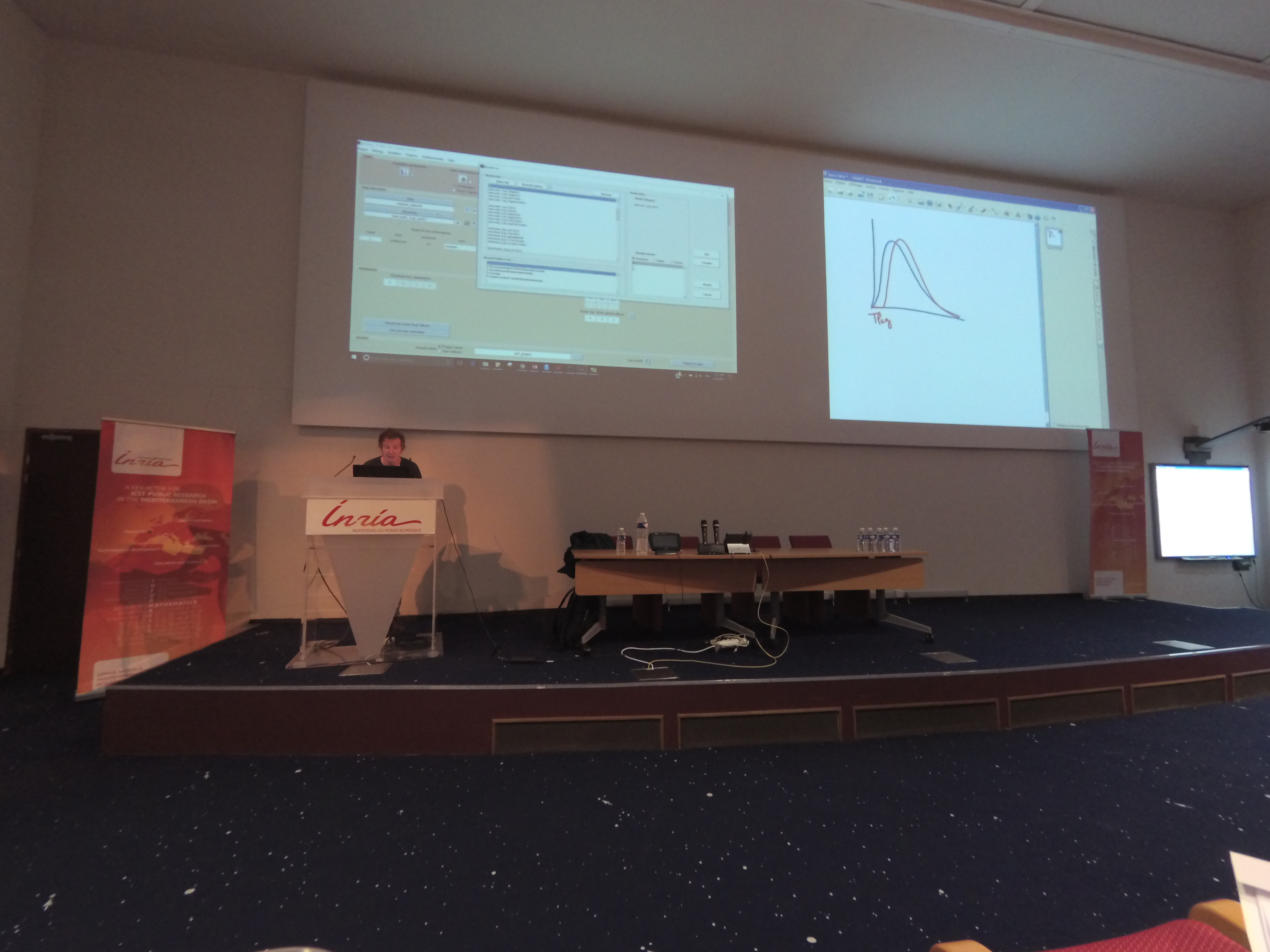 MOMI 2017
MOMI 2017
Day: Tuesday, 28th of February
Directeur de Recherche, Inria Saclay – Île-de-France
Head of joint Inria – CMAP team Xpop
Member of the Center of Applied Mathematics (CMAP), Ecole Polytechnique
Member of the High Council for Biotechnology
2015 Inria – Académie des Sciences – Dassault Systèmes Innovation Award
2015 ISoP (International Society of Pharmacometrics) Innovation Award
Title:
Modeling and simulation of pharmacometric models: methods and tools.
Abstract:
Population models describe biological and physical phenomena observed in each of a set of individuals, and also the variability between individuals. This approach finds its place in domains like pharmacometrics when we need to quantitatively describe interactions between diseases, drugs and patients. This means developing models that take into account that different patients react differently to the same disease and the same drug. The population approach can be formulated in statistical terms using mixed effects models.
Such framework allows one to represent models for many different data types including continuous, categorical, count and time-to-event data. This opens the way for the use of quite generic methods for modeling these diverse data types.
In particular, the SAEM (Stochastic Approximation of EM) algorithm implemented in the Monolix software (http://lixoft.com/products/monolix) is extremely efficient for maximum likelihood estimation of population parameters, and has been proven to converge in quite general settings.
Monolix is associated with Mlxtran, a declarative language designed for encoding hierarchical models, including complex mixed effects models. Mlxtran is also a particularly powerful solution for encoding dynamical systems represented by a system of ordinary differential equations. Mlxtran is also used by mlxR, a R package for easily computing predictions and simulating data from complex mixed effects models (http://simulx.webpopix.org).
I will first show how these tools can be used for modelling and simulating pharmacokinetics and pharmacodynamics, infectious disease or tumor growth processes.
During the hands-on session, we will use the Monolix software for modelling pharmacokinetics data coming from a real word clinical study.
Content:





